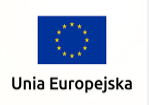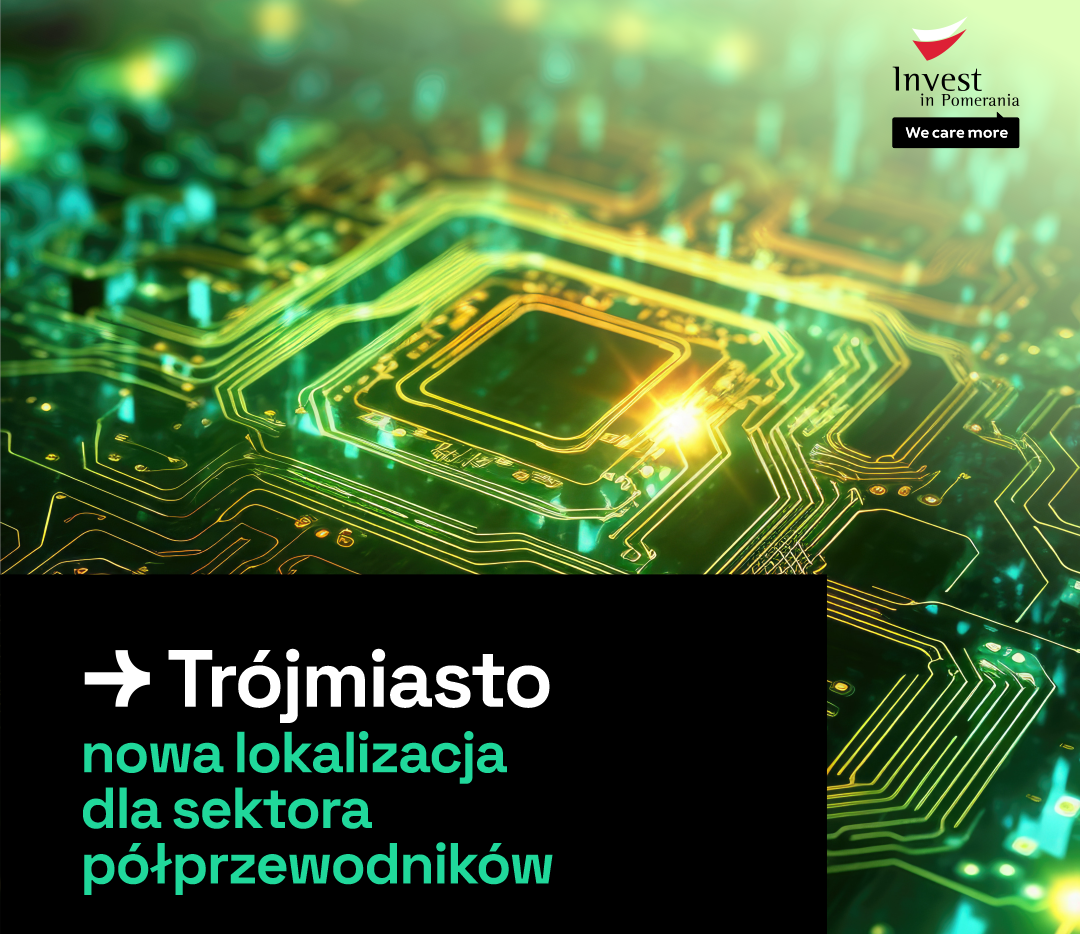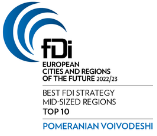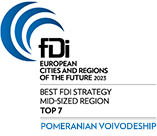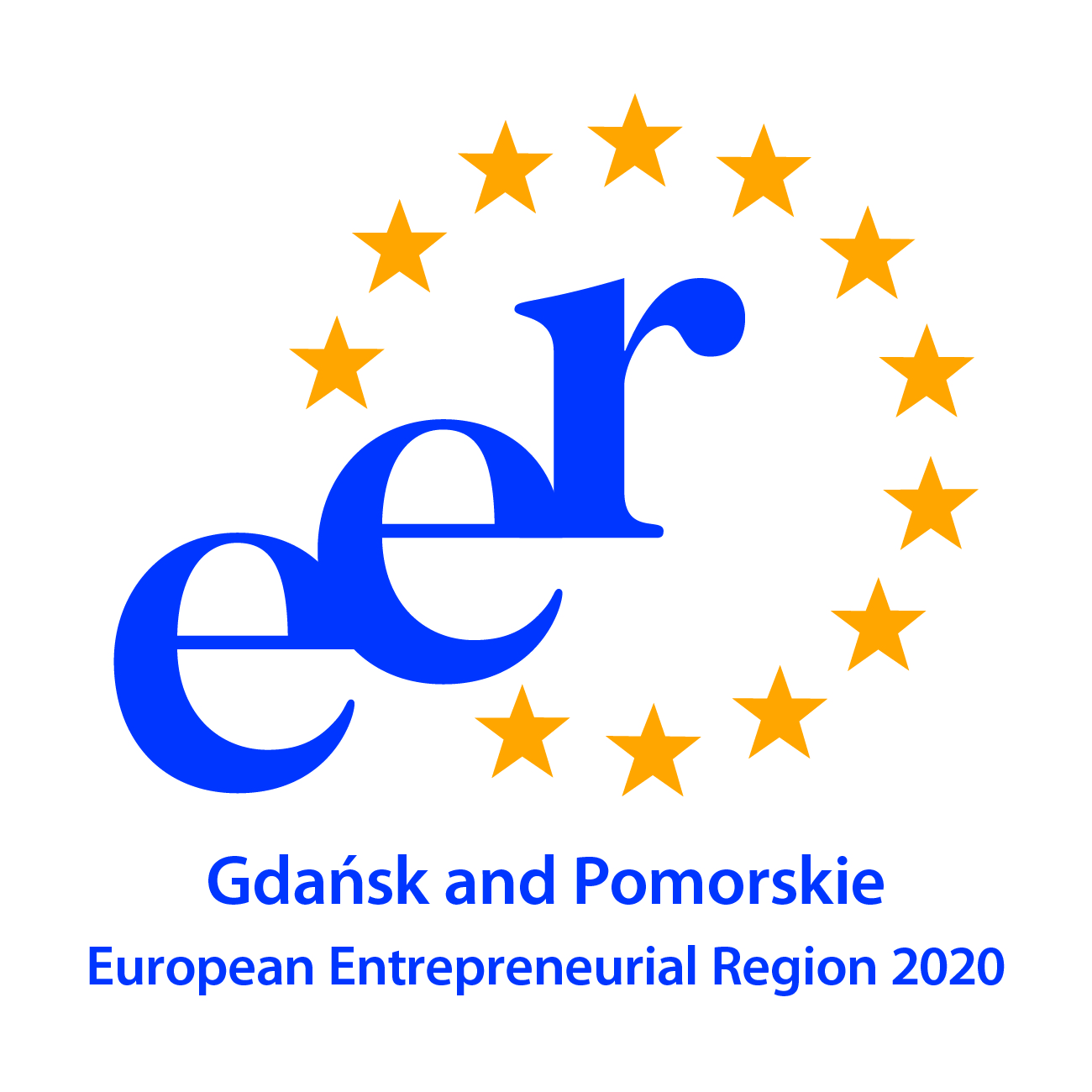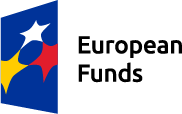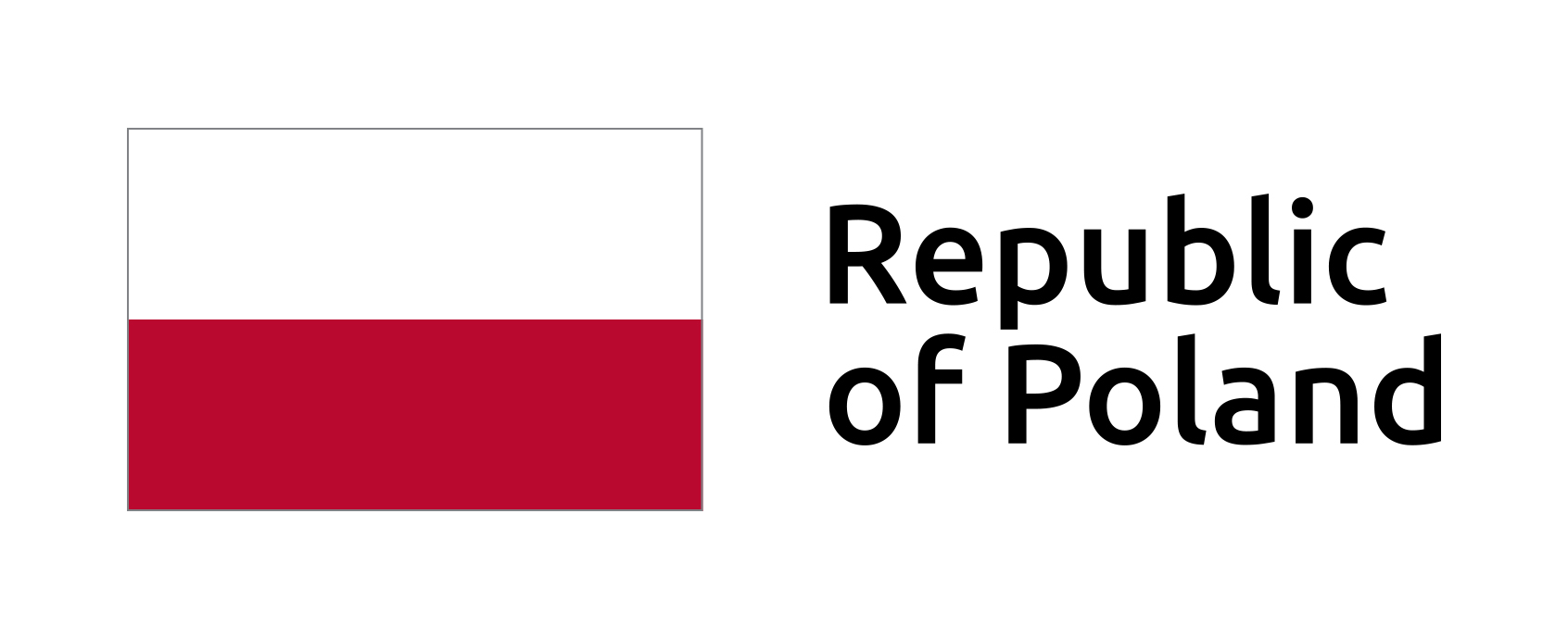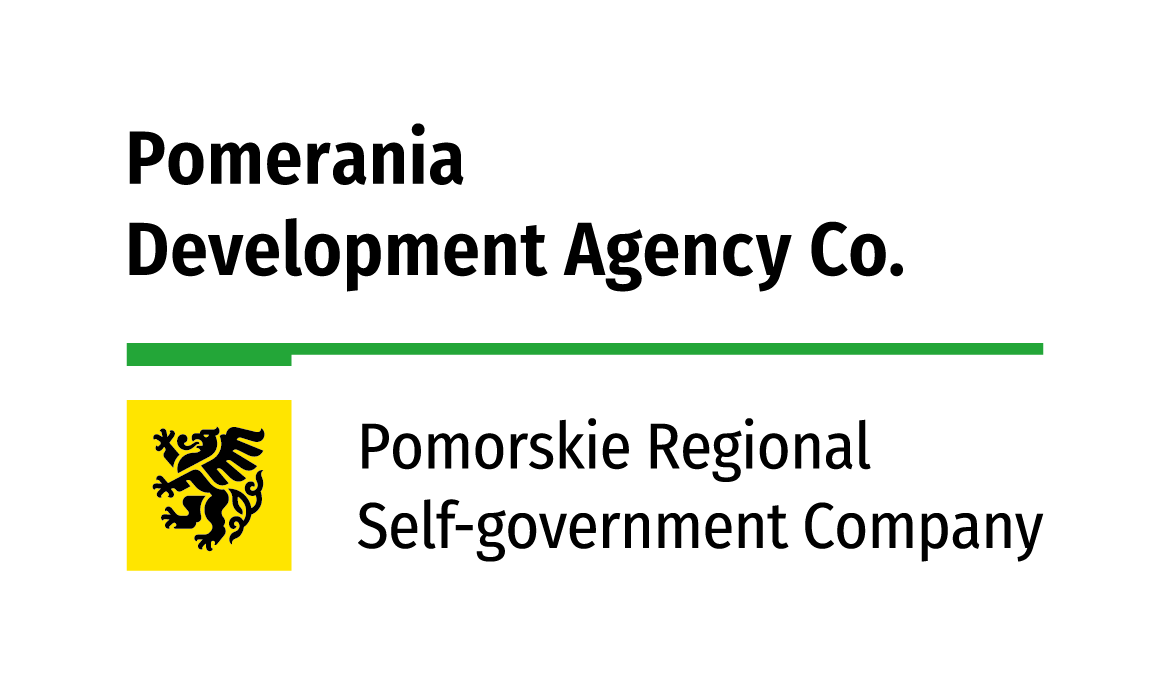The current trends shaping the global supply chain of the semiconductor manufacturing sector create new opportunities for the industry in Central and Eastern Europe. At the time when Invest in Pomerania, as the first organization in Poland, joined SEMI – a global association of over 2,500 entities representing the world’s largest manufacturers of chips and electronics, Intel announced its plan to build a semiconductor factory in Poland.
The SEMI (semiconductors) association, established in 1970, brings together companies and institutions responsible for innovations in materials, designs, software and services that enable the creation of intelligent electronic products and, above all, semiconductors. The organization helps to create and develop new markets and jointly solve the challenges of the industry.
Invest in Pomerania is a self-governance initiative, coordinated by the Pomeranian Development Agency, that provides services to the investors in the Tri-City (Gdansk) area, Poland. Joining SEMI sends an important signal of Poland’s readiness to cooperate in shaping a new supply chain in the production of semiconductors. By placing itself on the global map of the sector, Pomerania is taking another step towards attracting foreign investors.
– Invest in Pomerania joining SEMI is an element of the implementation of the region’s development strategy set by the World Bank, which, analyzing global FDI flows and the economy of Pomerania, indicated the semiconductor sector as an industry that has strong grounds to develop. We know that we can be competitive in the competition for such projects and the implementation of another investment in the field of semiconductor production in the Tricity Agglomeration is only a matter of time – comments Mieczysław Struk, Marshal of Pomeranian Voivodeship.
EU industrial strategy
The impulse for reinventing the semicon industry came from the pandemic. The EU is currently implementing a new industrial strategy – the European Chips Act (2022) – which aims to reduce the dependence of European countries on supplies from outside the continent. In early May, the European Commission launched the previously announced pilot semiconductor supply chain monitoring system, whose task is to collect information to assess risk and quickly respond to any potential crisis situations through the European Semiconductor Expert Group. The key element of the initiative is to launch significant incentives in the form of cash grants for the largest companies that locate new production facilities in Europe. It is worth recalling that the EU in 2020 accounted for only 10 percent of global production of microprocessors. According to the new strategy and the adoption of the European Chips Act, this situation is to change so that Europe’s global share in this market shall reach 30% in 2030. The strategy assumes that EUR 43 billion will be allocated for this purpose.
Year 2020 – a turn towards nearshoring
Global semiconductor production is concentrated mainly in four countries: Taiwan, South Korea, the USA and to a lesser extent China. Currently, 92 percent production of the most advanced semiconductors (below 10 nanometers) is carried out in Taiwan. After a strong supply chain crisis in 2020 and the potential threat of a conflict in the Taiwan Strait, the global market is in the process of relocating production, with it being estimated that the construction of local supply chains will require investments of USD 1 trillion, which will increase semiconductor prices from 35 up to 65 percent. Nevertheless, the strategic decision to geographically diversify the production of microprocessors has been made and further investments are being announced both in the USA and Europe. Only in recent months, the American integrated circuit manufacturer Wolfspeed announced the opening of a plant in Ensdorf, Germany, which will be the largest chip factory in the world. A new research and development center will be built in Nuremberg. ST Microlectronics, a French-Italian electronics company, plans to build a second 300mm semiconductor factory in Crolles, France. However, the greatest attention is drawn to Intel, which will implement new investments in Europe, including Germany and Poland.
Intel relies on Poland
In June, Intel announced that it would invest nearly USD 5 billion in Poland and build a factory in Miękinia near Wrocław, where up to 2,000 people would find jobs. Semiconductor assembly and testing will be carried out in the new Intel facility. This is the first such large semiconductor project in Central and Eastern Europe.
Intel’s investment in Poland, combined with the already existing silicon wafer manufacturing plant in Leixlip, Ireland, the planned construction of a next-generation semiconductor factory in Magdeburg, Germany, and a research and development center near Paris, will add another element to the construction of a full semiconductor production chain in Europe.
Polish opportunities in the global race from the perspective of Pomerania
According to Kearney consulting company, the reconstruction of the semiconductor ecosystem can bring an increase in GDP of EUR 77-85 billion and additional budgetary revenues of EUR 7-9 billion, as well as 17-20 thousand new jobs. Further investment projects are planned, including those of Asian companies, and in this context, the next location in Poland that has the greatest chance of win such investments will be the Tricity agglomeration. It’s the biggest business hub in Northern Poland and south Baltic of over 1.6 million residents. There are 24 universities in the entire region, which educate 84,000 students, of which approx. 20,000 enter the labor market every year. The needs of the semiconductor industry are undoubtedly best met by the Gdańsk University of Technology. About 5,400 students study in as many as 13 majors that are vital for the sector. Vocational education is also being developed in the region, focusing on e.g. in professions related to the electronics, mechatronics and ICT. What’s more, due to the huge energy intensity of semiconductor production, supply of green energy is a crucial factor while during the site selection process. The offshore sector being developed in Pomerania, which by 2030 will provide almost 8 GW of energy to the grid, is another asset of the region. The local ecosystem of high-tech companies operating in sectors related to electronics, modern automotive and IT is also of key importance. The factories of companies such as Aptiv, Flex, Jabil, Northvolt, Thales, along IT centers of Synposis, Amazon, SII, Boeing and Lufthansa operating in the region guarantee the availability of high competences. Finally, Europe’s largest Intel research and development center, which employs almost 4,000 engineers in Gdańsk working on data processing, AI and cloud solutions, is an indicator of the region’s aspirations.
– Most importantly, in the context of semiconductor production projects, we offer an industrial area where such investments can be located. First of all, it is perfectly located, right next to the motorway junction, only 25-minute car ride from the airport in Gdańsk, yet within the Tricity agglomeration, which ensures access to qualified engineering staff. Secondly, it is a large area, over 400 hectares. Currently, together with the Pomeranian Special Economic Zone and the authorities of the Pruszcz Gdański commune, we are working on rezoning, while the entire concept of developing road infrastructure and supplying utilities for chips manufacturing has already been developed. The offer of a new industrial park for the semiconductor industry is ready – says Mikołaj Trunin, deputy director of Invest in Pomerania.
Specific actions
It is worth noting that a huge advantage of investing in the region is the presence of the aforementioned Pomeranian Special Economic Zone. It supports entrepreneurship by creating attractive conditions for the development of companies through, among other things, exemption from income tax – for a large company the aid amounts to as much as 30% of the declared investment expenditure.
– Our region has the chance to be selected for the next investment in the semiconductor industry. We are definitely prepared for this. Excellent infrastructure, strategic location, strongly developed transport network, including marine routes, railroads, airways and motorways, allows us to bring in foreign manufacturing companies and those from the modern business services sector. We are also distinguished by our highly educated and qualified workforce, which is an invaluable asset for starting investments in our country – says Przemysław Sztandera, President of the Management Board, Pomeranian Special Economic Zone.
Invest in Pomerania and the Pomeranian Special Economic Zone teams are currently taking part in Semicon West, a trade fair held in San Francisco. It is one of the largest events of the semiconductor sector in the world. It is attended by the largest chip manufacturers, equipment and component suppliers, providing an excellent opportunity to build networks and present Pomerania as a location where the sector will grow in the coming years.
– At the sector development strategy symposium, the process of regionalising supply chains was a major theme. Current geopolitical factors will strongly influence the decoupling of the global economy, but, as experts emphasise, this will be a difficult process: for example, more than 60% of Australia’s exports go to China – it is difficult to talk about the creation of completely separate economic blocs in such circumstances – comments Anna Korczak of the PSEZ.
Another extremely important issue raised by representatives of the sector was the supply of energy, necessary for the semiconductor sector to reach the projected level of USD 1 trillion in revenues.
– It is estimated that demand could outstrip the supply of energy needed to power fabs by up to three times. New investments will be needed, especially in the RES sector. In this context, with the offshore wind sector under construction, our region has a great opportunity to attract further investment in the semiconductor sector – adds Mikołaj Trunin.
Invest in Pomerania team prepared a new landing page that shows all the competitive advantages of the region to accommodate semicon industry including information on economic indicators, semicon-related ecosystem, talent availability, investment site and incentives. The landing page can be found here: https://semiconductors.investinpomerania.pl/.

